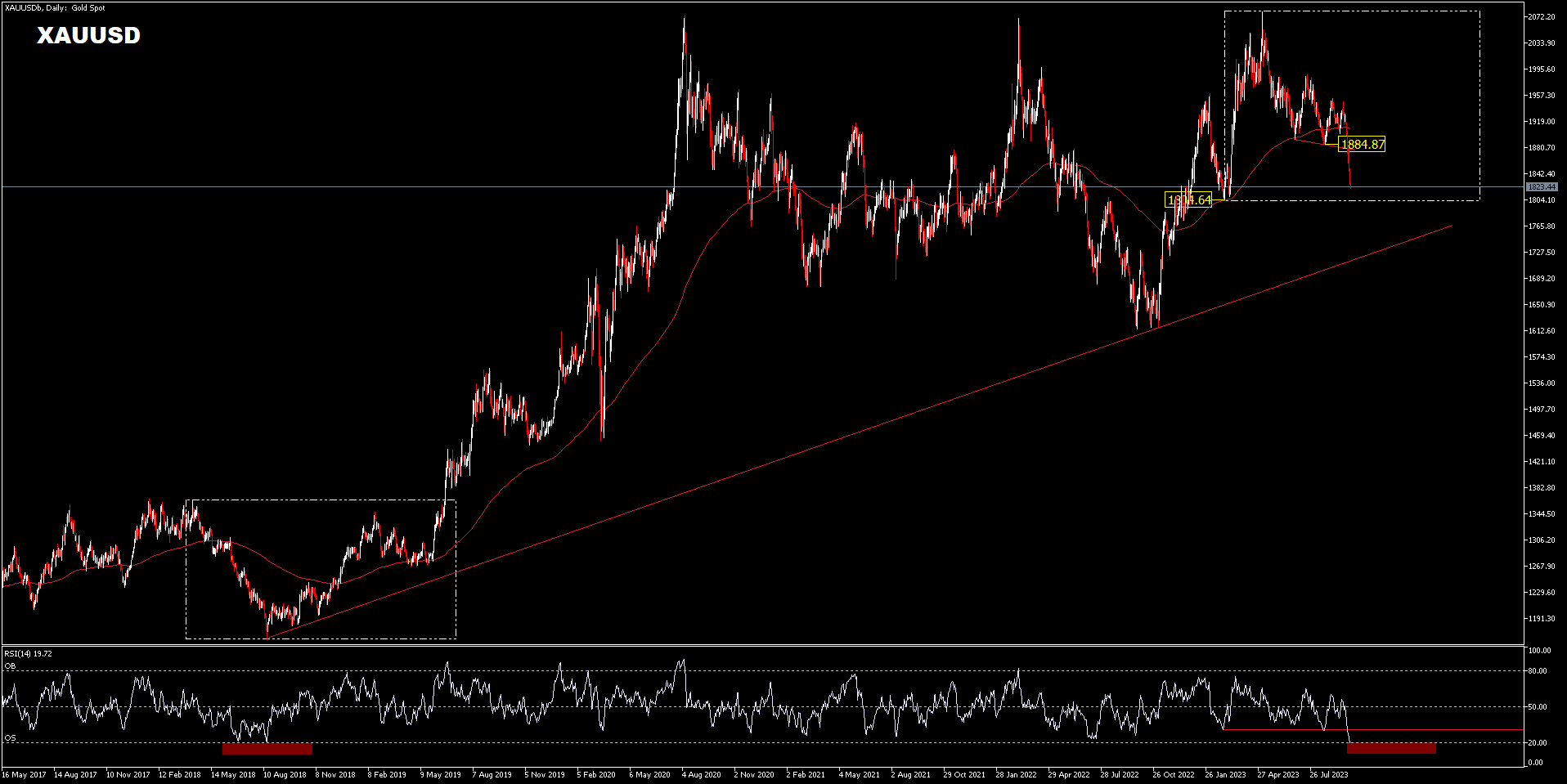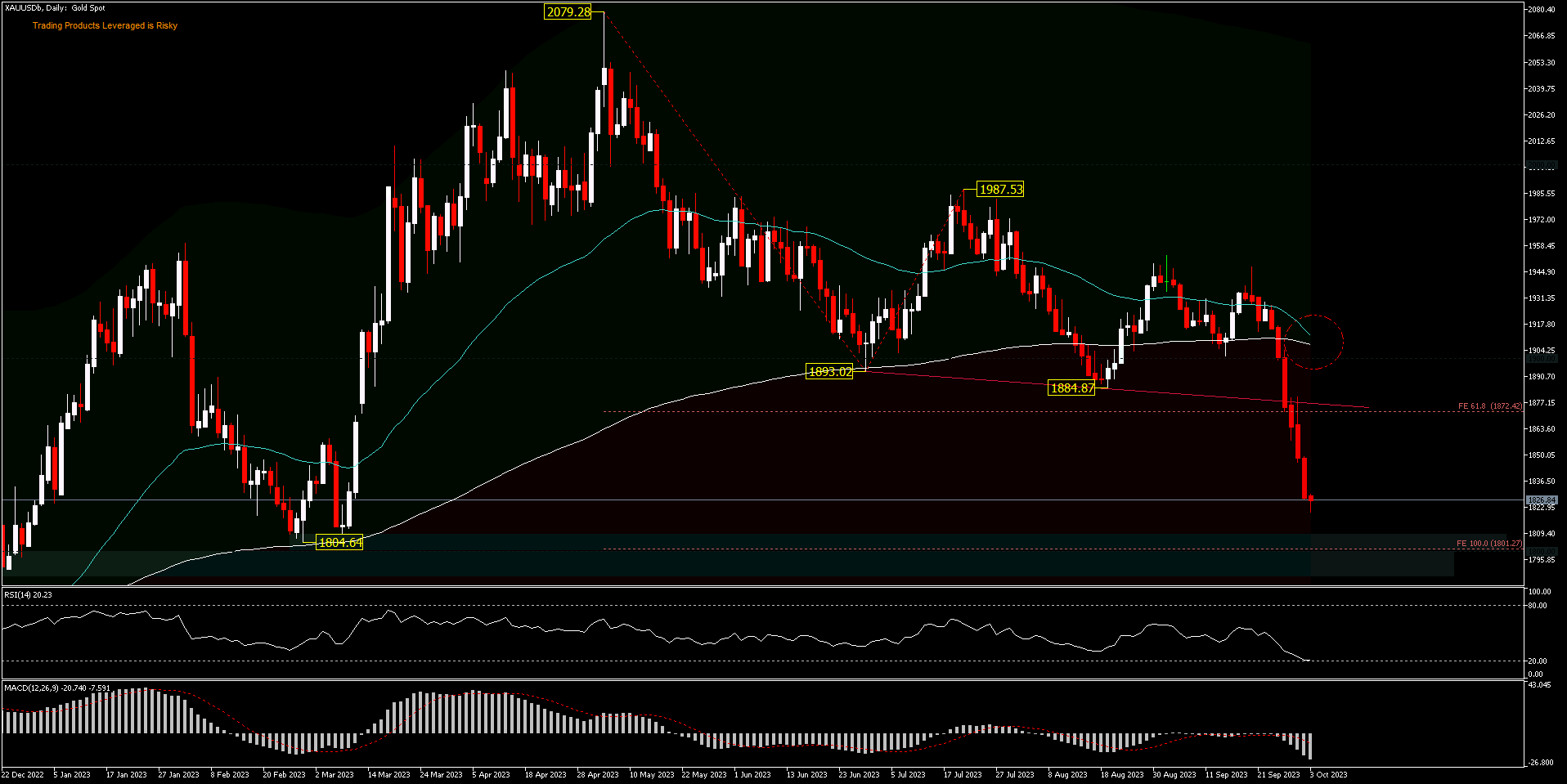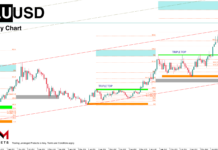Last week’s decline in gold prices accelerated after the break of the current downtrend channel support. The last time Gold traded at such a low was six months ago, when the US regional banking crisis triggered an influx of buyers, pushing prices away from support around $1809. The biggest weekly loss in the last two years for Gold was around -4%, seen last week. The price dropped to below $1835, with the break of the $1884 support. This seems to inform the bulls’ surrender in defending the buy area. New lows and increased volatility may be on the horizon after this.
Gold extended weakness losing over 1%, sinking to its lowest level amid pressure from a strengthening Dollar and rising Treasury yields.
Investors are concerned about the prospects of a longer-term higher interest rate scenario in the US, after the Federal Reserve gave a hawkish pause at its September policy meeting. Higher interest rates increase the opportunity cost of holding non-yielding bullion, thereby reducing its appeal. Meanwhile, data released last week showed that the Fed’s favoured core PCE price index rose less than forecast in August, while the US economy maintained a fairly solid growth pace of 2.1% in the second quarter. Investors are now looking forward to this week’s key US employment data for further guidance.

Nevertheless, in the short term Gold is in oversold conditions, giving rise to a potential corrective bounce, if trading volumes are met and selling interest is restrained. On the daily chart (D1), the RSI oscillator has dropped to 19. The last time this indicator recorded such low levels was in June and August 2018, when there was a reversal from the decline in gold growth in the following years. That time Gold lost about -15% before reversing, while currently it is down more than -12% and there are no strong indications for a reversal yet.
The context is different now, but when compared to the weekly chart (W1), the RSI still has wide room towards oversold levels. And the weekly oversold was only recorded during the historic drop in mid-2013.
The next support is seen at $1809/1804 which is this year’s low and the continued decline is projected at FE100% at $1801 [from 2079-1893 and 1987 drawdown]. A slower pace ahead of key US labour data is likely and partial profit taking after a sharp decline may be the near-term scenario, with the overall bearish bias to remain intact as long as the price trades below $1884.
Click here to access our Economic Calendar
Ady Phangestu
Market Analyst – HF Educational Office – Indonesia
Disclaimer: This material is provided as a general marketing communication for information purposes only and does not constitute an independent investment research. Nothing in this communication contains, or should be considered as containing, an investment advice or an investment recommendation or a solicitation for the purpose of buying or selling of any financial instrument. All information provided is gathered from reputable sources and any information containing an indication of past performance is not a guarantee or reliable indicator of future performance. Users acknowledge that any investment in Leveraged Products is characterized by a certain degree of uncertainty and that any investment of this nature involves a high level of risk for which the users are solely responsible and liable. We assume no liability for any loss arising from any investment made based on the information provided in this communication. This communication must not be reproduced or further distributed without our prior written permission.



















